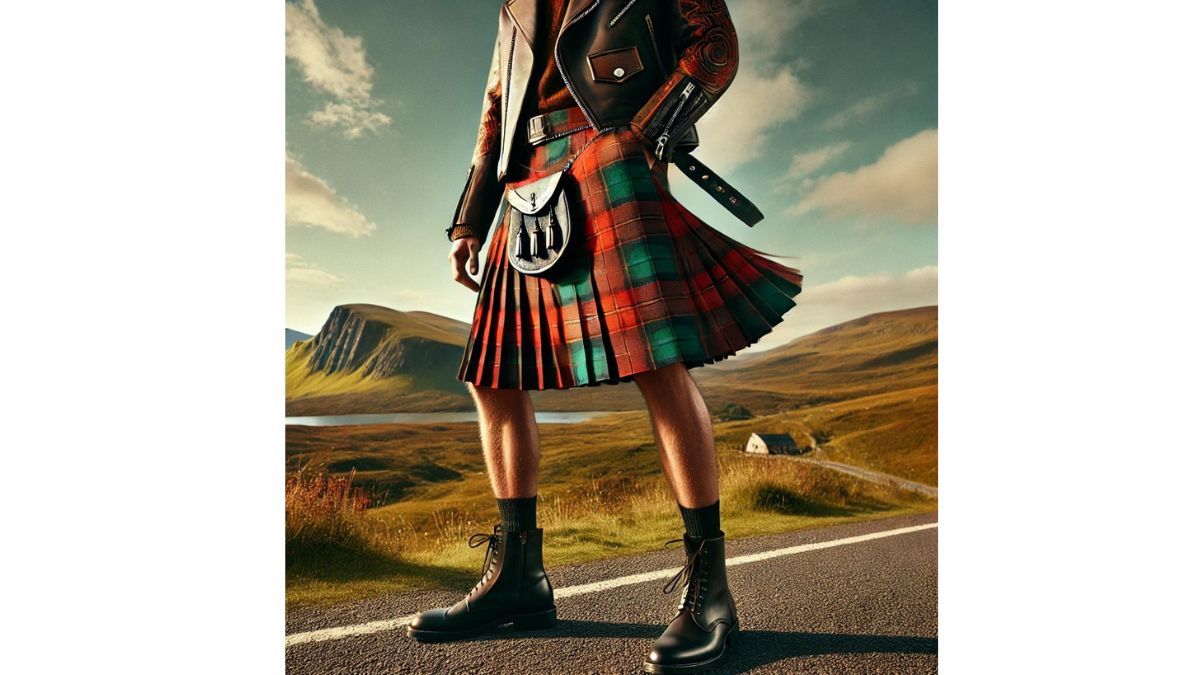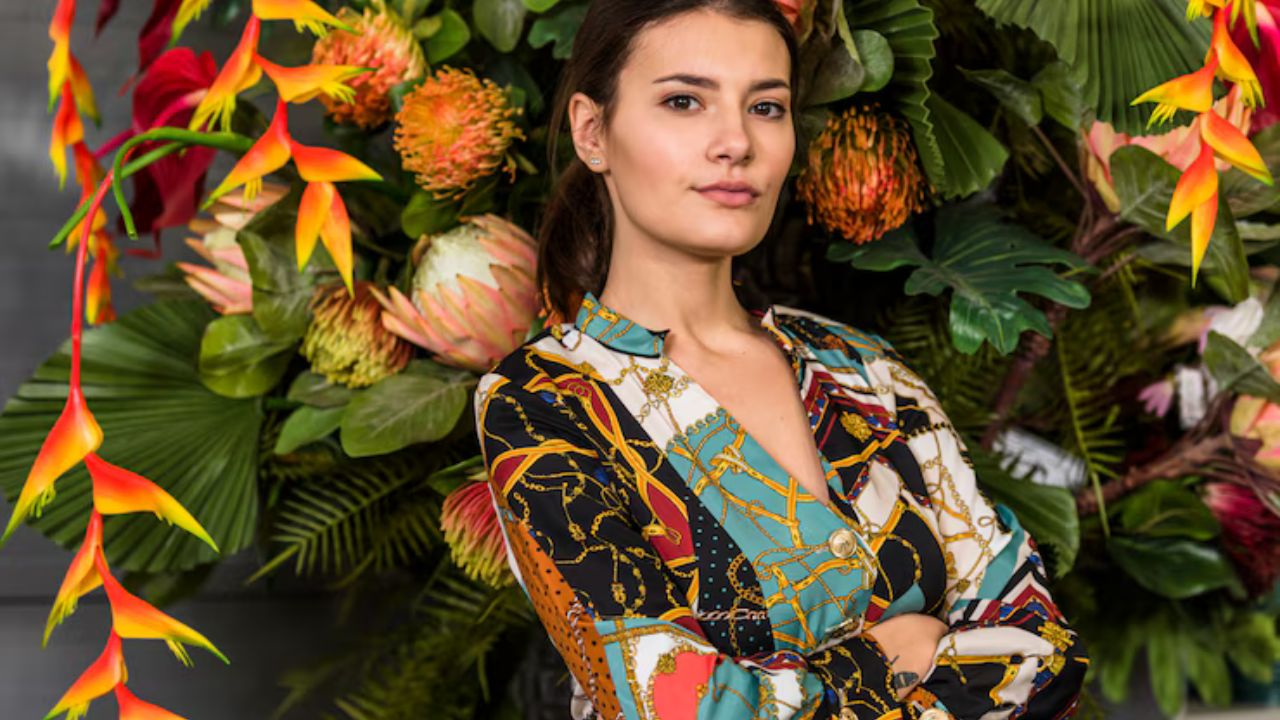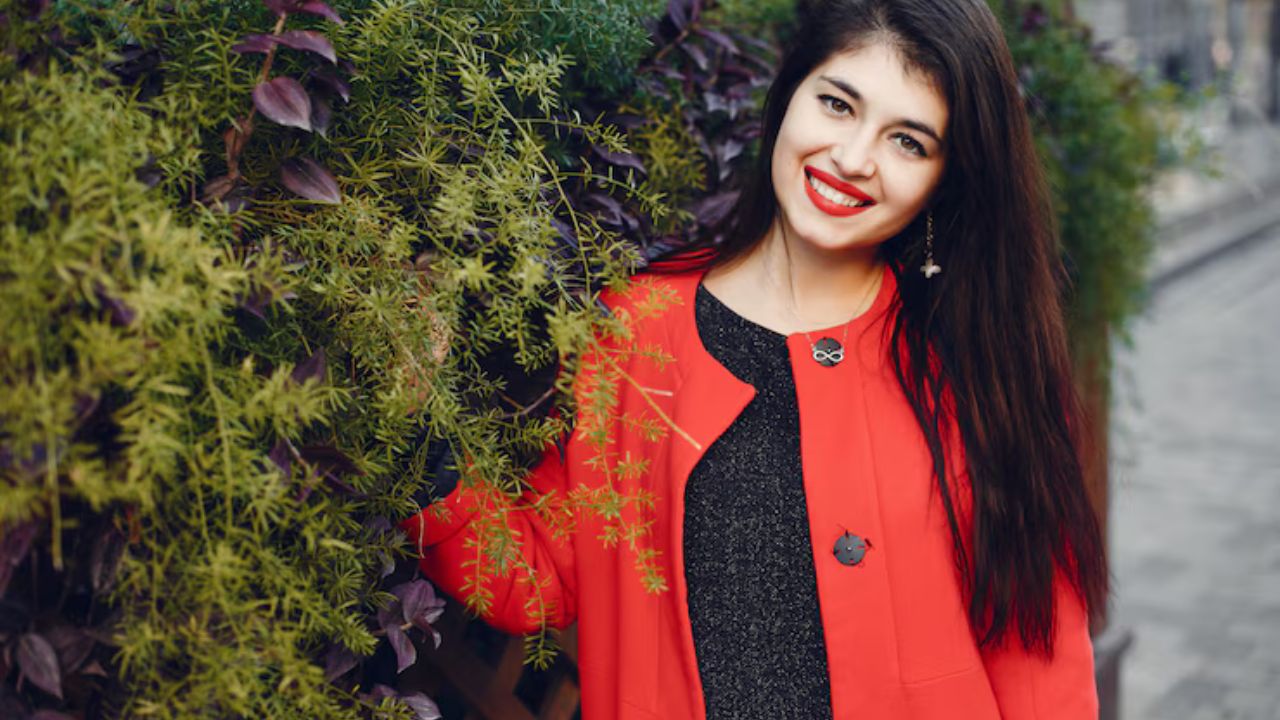FASHION
Unveiling the Timeless Charm of Kilts: A Modern Twist on Scottish Tradition

The kilt is more than just a piece of clothing; it is a symbol of heritage, culture, and individuality. Rooted in Scottish tradition, the kilt has evolved over centuries to become an iconic garment that transcends borders and generations. While it carries the weight of history, the modern kilt has found its place in contemporary fashion, proving its versatility and timeless appeal. This article explores the origins, evolution, and modern-day relevance of kilts, shedding light on why they remain a hot topic in the world of fashion and culture.
A Brief History of the Kilt
The kilt’s origins can be traced back to the 16th century in the Scottish Highlands. Originally, it was a full-length garment known as the “great kilt” or “feileadh mór,” which doubled as clothing and a blanket. Made from woven wool and adorned with tartan patterns, it was designed for practicality, offering warmth and mobility in the rugged Highland terrain.
By the 18th century, the great kilt had evolved into the smaller, more tailored garment we recognize today. The modern kilt, or “feileadh beag,” was easier to wear and became a symbol of clan identity. Each clan had its own unique tartan, a pattern of crisscrossed horizontal and vertical bands of colors, which made the kilt a badge of loyalty and pride. However, the kilt’s association with Scottish identity also made it a target of suppression during the 1746 Dress Act, which banned its use after the Jacobite uprising. The ban was lifted in 1782, and the kilt experienced a resurgence, becoming a symbol of rebellion and resilience.
The Kilt in Modern Times
Today, the kilt is no longer confined to Scotland or traditional ceremonies. It has become a global fashion statement and is embraced by people from all walks of life. Modern kilts come in various styles, materials, and designs, catering to a wide range of preferences and occasions.
The Fashionable Kilt
In recent years, kilts have made their way onto international runways, music festivals, and even everyday streetwear. Designers have reimagined the kilt by experimenting with unconventional fabrics such as leather, denim, and even synthetic materials. These modern iterations retain the essence of the traditional kilt while appealing to contemporary tastes.
Celebrities like Ewan McGregor, Gerard Butler, and even non-Scots like Vin Diesel and Harry Styles have been spotted wearing kilts, further cementing their status as a fashionable choice. Kilts are no longer limited to tartan patterns; bold prints, solid colors, and innovative designs have expanded their appeal, making them a versatile wardrobe staple.
The Utility Kilt
The rise of utility kilts has brought practicality to the forefront. These modern kilts are designed with functional features such as multiple pockets, durable materials, and adjustable waistbands. Ideal for outdoor activities, festivals, or casual wear, utility kilts blend style and practicality seamlessly. They appeal to those who appreciate the kilt’s aesthetic but prefer a more rugged and functional approach.
Kilts in Women’s Fashion
Traditionally considered a male garment, the kilt has found its way into women’s fashion as well. Women’s kilts and skirts inspired by traditional designs have gained popularity, offering a blend of elegance and heritage. These garments are often tailored to suit modern preferences, with shorter lengths and lighter fabrics, making them perfect for both formal and casual settings.
Cultural Significance of Kilts
Despite their modern adaptations, kilts remain deeply rooted in cultural significance. For Scots, the kilt is more than just attire; it’s a symbol of pride, identity, and belonging. Wearing a kilt often signifies a connection to one’s heritage and a celebration of Scottish culture.
Kilts are a staple at weddings, Highland games, and other traditional events. They are often paired with sporrans, kilt pins, and ghillie brogues to complete the look. In these settings, the kilt serves as a link to the past, honoring traditions that have been passed down through generations.
The Rise of Custom Kilts
One of the reasons kilts remain relevant today is their ability to be customized. Modern consumers value individuality, and custom kilts offer endless possibilities. From choosing tartan patterns to selecting fabrics and features, individuals can create a kilt that reflects their personality and preferences.
Online retailers and traditional kilt makers alike have embraced this trend, offering tailored kilts that cater to a global audience. Whether it’s for a wedding, a festival, or everyday wear, a custom kilt allows wearers to make a statement while honoring tradition.
Kilts as a Symbol of Inclusivity
The kilt’s adaptability has also made it a symbol of inclusivity. It transcends gender, age, and nationality, welcoming everyone to embrace its charm. Kilts are often worn at LGBTQ+ events, cultural festivals, and other gatherings where diversity and self-expression are celebrated. This inclusivity has played a significant role in the kilt’s continued popularity and relevance.
Challenges and Misconceptions
Despite their appeal, kilts are not without challenges. Misconceptions about their use and cultural significance can sometimes lead to misunderstandings. For instance, the belief that kilts must always adhere to strict traditional rules can deter some from embracing them. Additionally, the notion that kilts are only for Scots or special occasions limits their potential as everyday attire.
Education and awareness are key to overcoming these challenges. By understanding the rich history and evolving nature of kilts, more people can appreciate their versatility and adopt them into their wardrobes.
How to Wear a Kilt
Wearing a kilt involves more than just putting it on; it’s about understanding its components and styling it appropriately. Here are some tips:
- Choose the Right Fit: A well-fitted kilt sits comfortably around the waist, typically at the navel. Length is crucial, as the hem should fall to the middle of the knee.
- Pair It with Accessories: Traditional accessories like sporrans, kilt pins, and ghillie brogues enhance the kilt’s look. For modern styles, belts, boots, and jackets can add a contemporary touch.
- Consider the Occasion: Formal events often call for traditional tartans and full Highland attire, while casual settings allow for more creativity with fabrics and designs.
- Experiment with Layers: Kilts can be paired with sweaters, blazers, or even graphic tees, depending on the desired look. Layering adds depth and personality to the outfit.
Why Kilts Are Here to Stay
The enduring appeal of kilts lies in their ability to balance tradition and innovation. They offer a unique blend of history, culture, and modernity that few garments can match. As fashion trends continue to evolve, the kilt’s versatility ensures its place in the ever-changing landscape of style.
Moreover, the kilt’s role as a symbol of identity and self-expression makes it a powerful garment that resonates with people worldwide. Whether worn for cultural pride, fashion, or functionality, the kilt remains a timeless piece that continues to captivate and inspire.
Conclusion
From its humble beginnings in the Scottish Highlands to its status as a global fashion statement, the kilt has come a long way. Its journey is a testament to the power of tradition, adaptability, and self-expression. By embracing the kilt, individuals not only honor a rich cultural heritage but also make a bold statement about who they are.
As we look to the future, one thing is certain: the kilt will continue to evolve, inspiring new generations while staying true to its roots. Whether you’re a fashion enthusiast, a history buff, or someone looking for a unique addition to your wardrobe, the kilt offers something for everyone. It’s not just a garment; it’s a timeless charm that stands the test of time.
FASHION
Understanding Ghuk-y44551/300: A Comprehensive Guide

Introduction
In the world of advanced technology and specialized equipment, unique identifiers like Ghuk-y44551/300 play a crucial role in categorization, tracking, and optimization. Whether it’s a product code, a model number, or a technical specification, understanding such identifiers can enhance efficiency in procurement, maintenance, and system integration.
This article delves deep into the significance of Ghuk-y44551/300, exploring its potential applications, benefits, and why it matters in various industries.
What is Ghuk-y44551/300?
Ghuk-y44551/300 appears to be a specialized alphanumeric code, possibly representing:
-
A Product Model or Serial Number – Used in manufacturing, electronics, or machinery.
-
A Component Identifier – Found in automotive, aerospace, or industrial equipment.
-
A Software or Firmware Version – Used in tech industries for version control.
-
A Part Number in Supply Chain Systems – Helps in inventory and logistics management.
Without additional context, we can analyze its structure to infer possible meanings:
-
“Ghuk” – Could be an abbreviation for a brand, project, or system.
-
“y44551” – Likely a unique identifier or batch number.
-
“/300” – May indicate a variant, revision, or capacity specification.
Possible Applications of Ghuk-y44551/300
1. Industrial Machinery & Automation
Many industrial machines and robotic systems use complex codes for part identification. Ghuk-y44551/300 could be a critical component in:
-
CNC Machines – A spindle motor or control module.
-
Hydraulic Systems – A valve or sensor model.
-
3D Printers – A specialized extruder or firmware version.
2. Automotive & Aerospace Components
High-performance vehicles and aircraft rely on precise part numbering for maintenance and replacements. This code might belong to:
-
Engine Control Units (ECUs)
-
Turbocharger Components
-
Avionics Systems
3. Electronics & Semiconductor Industry
In electronics manufacturing, codes like Ghuk-y44551/300 help track:
-
Microchips & Circuit Boards
-
Power Supply Units
-
Embedded System Modules
4. Medical Equipment & Devices
Hospitals and labs use detailed part numbers for devices such as:
-
MRI or CT Scan Components
-
Surgical Robotics Parts
-
Diagnostic Machine Sensors
Why is Ghuk-y44551/300 Important?
1. Precision in Inventory Management
Unique identifiers prevent confusion in warehouses and supply chains, ensuring the right parts are ordered and installed.
2. Enhanced Traceability & Quality Control
Manufacturers track each component’s lifecycle, from production to deployment, improving reliability.
3. Faster Troubleshooting & Maintenance
Technicians can quickly identify faulty parts and replace them without delays.
4. Compliance with Industry Standards
Many sectors (automotive, aerospace, medical) require strict part tracking for safety regulations.
How to Find More Information About Ghuk-y44551/300?
If you encounter this code in a manual, invoice, or product listing, here’s how to decode it:
-
Check Manufacturer Documentation – Look for datasheets or user manuals.
-
Search Online Databases – Use platforms like:
-
Google Patents
-
Industry Part Catalogs (e.g., RS Components, Grainger)
-
Technical Forums (Reddit, Stack Exchange, specialized forums)
-
-
Contact the Supplier or OEM – Direct inquiries can provide exact specifications.
-
Barcode or QR Code Scanning – Some codes link to digital product info.
SEO-Optimized FAQs About Ghuk-y44551/300
Q1: Is a universal part number?
No, it’s likely specific to a manufacturer or industry. Cross-referencing with supplier databases is essential.
Q2: Can I find Ghuk-y44551/300 on e-commerce sites?
Possibly. Searching on platforms like Amazon Business, Alibaba, or industrial marketplaces may yield results.
Q3: What if is discontinued?
Check for replacement parts or contact the manufacturer for equivalent models.
Q4: Does Ghuk-y44551/300 have international certifications?
If it’s used in regulated industries (medical, automotive), it may have ISO, CE, or FDA compliance.
Conclusion
While Ghuk-y44551/300 may seem like a random string, it holds significant value in industrial, automotive, and technological applications. Understanding its role helps in procurement, maintenance, and system integration.
If you’re working with this identifier, always verify details through official channels to ensure compatibility and performance. Stay updated with industry trends, as part numbers often evolve with newer models and technologies.
FASHION
Evelyn Hurley: The Inspiring Life of a Remarkable Woman

Introduction
Evelyn Hurley is a name that resonates with resilience, creativity, and an unwavering spirit. Though not as widely recognized as some historical figures, her life story is one of perseverance, artistic passion, and quiet strength. In this article, we delve into the fascinating journey of Evelyn Hurley, exploring her background, achievements, and the legacy she left behind.
Whether you’re researching historical figures, seeking inspiration, or simply curious about lesser-known personalities, this comprehensive guide will provide valuable insights into Evelyn Hurley’s life.
Who Was Evelyn Hurley?
Evelyn Hurley was an American woman known for her contributions to art and her ability to overcome adversity. Born in the early 20th century, she lived through significant historical events, including the Great Depression and World War II. Despite facing numerous challenges, she pursued her passion for painting, leaving behind a collection of works that reflect her unique perspective on life.
Early Life and Background
Evelyn Hurley was born in 1914 in Massachusetts, USA. Growing up in a modest household, she developed an early interest in art. Her family struggled financially, especially during the economic hardships of the 1930s. However, Evelyn’s determination to express herself through painting never waned.
She attended local schools and later took art classes whenever possible. Her early works showcased a deep connection to nature and everyday life, often depicting rural landscapes and simple, yet profound, moments.
Artistic Journey and Style
Evelyn Hurley’s art was characterized by its folk-art style, featuring vibrant colors, bold strokes, and a sense of nostalgia. She painted scenes from her surroundings—barns, farm animals, and countryside vistas—imbuing them with warmth and emotion.
Unlike many formally trained artists, Evelyn was largely self-taught, which gave her work a raw, authentic quality. Her paintings were not just visual representations but also reflections of her resilience and optimism.
Notable Works
Some of her most recognized pieces include:
-
“The Red Barn” – A striking depiction of a rustic barn against a vivid sky.
-
“Countryside Memories” – A series of paintings capturing rural life in New England.
-
“Winter on the Farm” – A serene yet powerful portrayal of winter landscapes.
Her art gained local recognition, and she occasionally exhibited her work in community galleries.
Challenges and Triumphs
Evelyn Hurley’s life was not without struggles. She faced financial difficulties, health issues, and the societal constraints placed on women during her time. Yet, she continued to paint, using art as an escape and a form of self-expression.
In her later years, she received some acknowledgment for her contributions to folk art. Collectors and art enthusiasts began appreciating the sincerity and charm of her work.
Evelyn Hurley’s Legacy
Though Evelyn Hurley may not be a household name, her legacy lives on through her artwork and the inspiration she provides to aspiring artists. Her story is a testament to the power of passion and perseverance.
Why Is Evelyn Hurley Important?
-
Representation of Folk Art – Her work embodies the essence of American folk art, preserving rural life’s simplicity.
-
Inspiration for Overcoming Adversity – Despite hardships, she pursued her passion, proving that creativity thrives even in difficult circumstances.
-
Contribution to Local Culture – Her paintings serve as historical records of early 20th-century New England life.
Where Can You Find Her Art Today?
Some of Evelyn Hurley’s paintings are held in private collections, while others have been displayed in regional museums. Art historians and collectors continue to seek out her work, recognizing its cultural significance.
Lessons from Evelyn Hurley’s Life
Evelyn Hurley’s story teaches us valuable lessons:
-
Follow Your Passion – Despite obstacles, she never abandoned her love for painting.
-
Embrace Simplicity – Her art found beauty in everyday scenes.
-
Perseverance Matters – She proved that dedication leads to a lasting legacy.
Conclusion
Evelyn Hurley may not be as famous as some artists, but her life and work hold immense value. Through her paintings, she captured the essence of a bygone era, leaving behind a legacy of resilience and creativity. Her story reminds us that art is not just about fame but about expressing one’s truth.
Whether you’re an art enthusiast, a history buff, or someone seeking motivation, Evelyn Hurley’s journey is worth exploring. Her work continues to inspire, proving that even the quietest voices can leave a lasting impact.
FAQs About Evelyn Hurley
1. When was Evelyn Hurley born?
Evelyn Hurley was born in 1914 in Massachusetts, USA.
2. What was Evelyn Hurley known for?
She was known for her folk-art paintings, depicting rural life and landscapes.
3. Where can I see Evelyn Hurley’s artwork?
Some of her works are in private collections and regional museums, particularly in New England.
4. Was Evelyn Hurley a professionally trained artist?
No, she was largely self-taught, which contributed to her unique artistic style.
5. Why is Evelyn Hurley’s story inspiring?
Her perseverance despite financial and personal struggles makes her an inspiring figure for artists and dreamers alike.
By learning about Evelyn Hurley, we honor not just her art but also the quiet strength of countless unsung heroes who shape our cultural heritage.
FASHION
Laura Heisler: A Talented Actress with a Unique Legacy

Introduction
Laura Heisler is an accomplished American actress known for her distinctive performances in film, television, and theater. With a career spanning over two decades, she has captivated audiences with her versatility, emotional depth, and ability to bring complex characters to life. Despite not being a mainstream Hollywood star, Heisler has left an indelible mark on independent cinema and stage productions.
In this article, we explore Laura Heisler’s career, her most notable roles, her acting style, and her contributions to the entertainment industry. Whether you’re a longtime fan or just discovering her work, this deep dive into her career will provide valuable insights into her artistic journey.
Early Life and Background
Laura Heisler was born on June 21, 1981, in Madison, Wisconsin, USA. From a young age, she displayed a passion for acting and storytelling. She pursued her interest in theater by attending New York University’s Tisch School of the Arts, where she honed her craft and developed a strong foundation in dramatic arts.
Her early career was marked by theater performances, where she gained recognition for her raw and emotionally charged portrayals. This experience laid the groundwork for her transition into film and television.
Breakthrough Roles in Film and Television
Laura Heisler’s breakthrough came with her role in the 2001 indie drama Happy Campers, directed by Daniel Waters. Her performance as “Wichita”, a quirky and introspective teenager at a summer camp, showcased her ability to balance humor and vulnerability. This role established her as a rising talent in independent cinema.
Notable Film Roles:
-
Loggerheads (2005) – Heisler played Elizabeth, a young woman grappling with personal struggles in this critically acclaimed drama. Her performance was praised for its subtlety and emotional resonance.
-
The Hawk Is Dying (2006) – Starring opposite Paul Giamatti, Heisler delivered a compelling performance as a troubled young woman entangled in a complex relationship.
-
The Babymooners (2017) – A departure from her dramatic roles, this comedy showcased her versatility as she played “Darla”, a free-spirited woman navigating an unconventional pregnancy journey.
Television Appearances:
Heisler has also made notable appearances on TV, including:
-
“Law & Order: Special Victims Unit” (2004)
-
“The Good Wife” (2012)
-
“Blue Bloods” (2014)
While her TV roles have been sporadic, each performance has reinforced her reputation as a skilled and adaptable actress.
Theater Career: A Showcase of Her Range
Laura Heisler’s theater work has been a significant part of her career. She has performed in Off-Broadway and regional productions, earning acclaim for her stage presence and ability to embody diverse characters.
Notable Theater Performances:
-
The Butcher of Baraboo (2006) – A dark comedy where Heisler played “Midge”, a mysterious and unpredictable character.
-
The Drunken City (2008) – Her role as “Melissa” in this romantic comedy-drama highlighted her comedic timing and emotional depth.
-
The Ugly One (2013) – A satirical play where Heisler demonstrated her ability to tackle absurdist and thought-provoking material.
Her theater work has solidified her reputation as a fearless actress willing to take on challenging and unconventional roles.
Acting Style and Unique Qualities
What sets Laura Heisler apart from other actors is her authenticity and willingness to embrace unconventional characters. She often portrays individuals who are quirky, troubled, or socially awkward, bringing a rare depth to these roles.
Key Traits of Her Performances:
-
Emotional honesty – She immerses herself in her characters, making them feel real and relatable.
-
Quirky charm – Even in dramatic roles, she infuses a unique energy that makes her characters memorable.
-
Fearless choices – She isn’t afraid to take on dark, comedic, or experimental projects.
Her ability to switch between comedy and drama seamlessly has made her a favorite among indie filmmakers and theater directors.
Why Laura Heisler Remains Underrated
Despite her talent, Laura Heisler hasn’t achieved the same level of fame as some of her contemporaries. Several factors contribute to this:
-
Focus on Independent Films – She has primarily worked in indie cinema, which doesn’t always get mainstream attention.
-
Selective Role Choices – Unlike actors who chase blockbuster roles, Heisler seems to prioritize meaningful and challenging characters.
-
Limited Media Presence – She maintains a low profile, avoiding the Hollywood spotlight.
However, her underrated status doesn’t diminish her impact. For those who appreciate nuanced acting, Heisler remains a hidden gem in the industry.
Laura Heisler’s Legacy and Influence
Though not a household name, Laura Heisler has influenced aspiring actors and indie filmmakers through her:
-
Commitment to character-driven storytelling
-
Willingness to take artistic risks
-
Dedication to theater and independent cinema
Her work continues to inspire those who value authenticity over commercial success.
Where Is Laura Heisler Now?
As of 2024, Laura Heisler has kept a relatively low public profile. She occasionally appears in independent films and theater productions but seems to prioritize personal projects over mainstream fame. Fans remain hopeful for a resurgence in her career, perhaps with a standout role that brings her the recognition she deserves.
Conclusion
Laura Heisler is a talented, underrated actress whose work in film, television, and theater deserves more recognition. With her unique ability to portray complex characters and her dedication to indie projects, she has carved out a distinctive niche in the entertainment industry.
Whether you’re revisiting her performances or discovering her for the first time, Laura Heisler’s body of work offers a refreshing departure from conventional Hollywood storytelling. Her legacy is a testament to the power of authentic, character-driven acting.
FAQs About Laura Heisler
1. What is Laura Heisler best known for?
She is best known for her roles in Happy Campers, Loggerheads, and The Hawk Is Dying.
2. Has Laura Heisler won any awards?
While she hasn’t won major awards, her performances have received critical acclaim in indie circles.
3. Is Laura Heisler active on social media?
She maintains a private life and has minimal social media presence.
4. What kind of roles does Laura Heisler typically play?
She often portrays quirky, troubled, or introspective characters in indie films and theater.
5. Will Laura Heisler return to mainstream acting?
There’s no confirmation, but fans hope to see her in more prominent roles in the future.
Final Thoughts
Laura Heisler’s career is a reminder that true artistry isn’t always measured by fame. Her work resonates with those who appreciate depth, originality, and emotional honesty in acting. As the entertainment industry evolves, perhaps more audiences will discover and celebrate her unique contributions.
Would you like to see Laura Heisler in more leading roles? Let us know your thoughts in the comments!
-

 BUSINESS3 months ago
BUSINESS3 months agoPrince Narula Digital PayPal Success: Transforming Online Payments
-

 ENTERTAINMENT6 months ago
ENTERTAINMENT6 months agoWWE SmackDown Episode 1488 Delivers a Knockout Performance
-

 ENTERTAINMENT3 months ago
ENTERTAINMENT3 months agoHighlights and Analysis: WWE SmackDown Episode 1491 Recap
-

 LAW4 months ago
LAW4 months agoAn Intriguing Journey into the Life of Jeff Tietjens
-

 HOME8 months ago
HOME8 months agoMaximizing Basement Space: Design Tips from Top Basement Renovation Contractors
-

 CELEBRITY1 year ago
CELEBRITY1 year agoDiscovering Edgardo Canales The Life and Journey of Adria Arjona’s Husband
-

 videos4 months ago
videos4 months agobad hair day episode 1 a sore subject
-

 News11 months ago
News11 months agoNews JotechGeeks Takes the Spotlight in Tech News World
